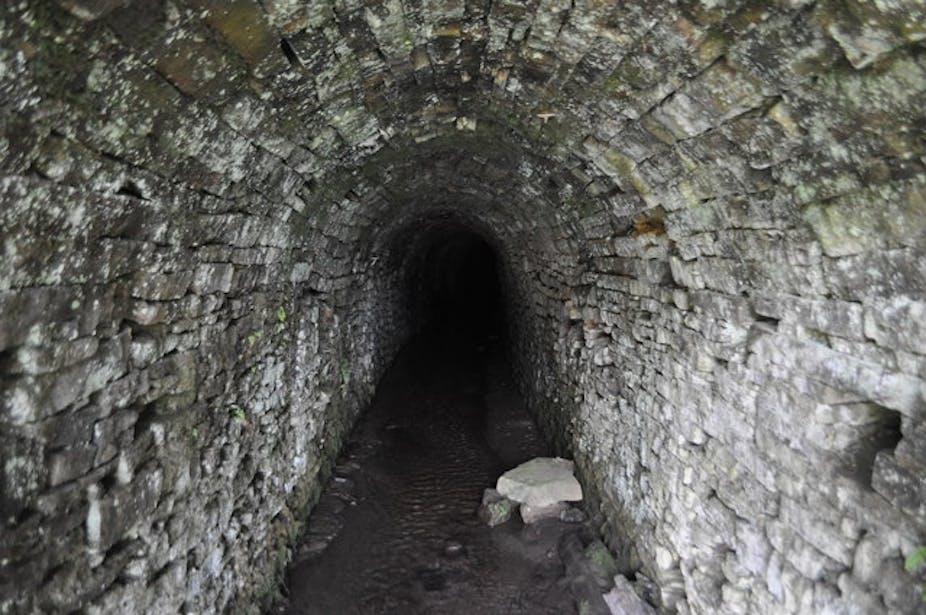Solar and wind power rightly receive a lot of attention as we struggle to ramp up renewable electricity and move away from fossil fuels. But in a damp, blustery island such as ours, generating heat is as much a priority as electricity. This is especially the case in fuel poor homes where affordable warmth (as opposed to fewer carbon emissions) is the pressing priority. In this case, district heating systems can play an important role in making heat cheaper, while also reducing carbon emissions.
The importance of renewable heat has been recognised in the Climate Change Act (Scotland), which requires 11% of Scotland’s heat to come from renewable sources by 2020. However, as of last year it’s estimated that less than 3% of demand for heat not being supplied by electricity is from renewables.
There is an exciting renewable resource right under our feet that lends itself well to district-level heating solutions, however: warm water lying in abandoned mine workings, which varies between 11°C and 14°C. There is a vast network of abandoned pits in the former mining areas across Britain where coal and ironstone were extracted. Many of these seams are found very close to the surface, extending down to a few hundred metres, which makes the water now occupying these voids relatively accessible.
The geology is such that many of these coal seams, and therefore the mine workings, are interconnected through faults and layers of permeable rock. This means that in many cases the water can move freely and could be considered as one large, albeit rather complex, reservoir. For this reason the thermal energy stored in the mine water should be considered a truly renewable energy sources, since any water extracted from a mine will be recharged by water percolating through from the surroundings.
The heat stored in these waters is vast. In Glasgow alone the stored heat is in excess of 2,000 GWh per square kilometre. While the temperature of the water might appear low, modern heat pump technologies are at such efficiencies that even a few degree difference between the air and water temperatures is adequate to harvest the heat. This would therefore means that the mineworkings below Glasgow are able to heat more than 80,000 homes per square kilometre.
British Geological Survey (BGS) scientists have interpreted more than 50,000 borehole records from the Glasgow area and records of abandoned mines dating back to 1839. These have been brought together with data from other sources to create detailed 3D geological models, enabling researchers to predict the geology and depth of mines anywhere below the city’s centre.
Using mine water to provide heating has been demonstrated already, in two housing association estates in Glasgow and Fife, in Scotland. These projects have run for over ten years, providing reliable heating to residents for a very low cost. For example, the average heating costs in Shettleston, Glasgow which uses heat from mineworkings is £150 per year plus £10/month for maintenance, compared to the national average of £800-1000 per year for gas heating.
These systems can be very easily reversed to provide cooling if required. Given its moderate levels of temperature (11-14°C) the water could be directly pumped into buildings as chilled water for air conditioning. Scotland’s temperate climate may not require it often, but large buildings such as universities, hospitals and offices require cooling year round due to the heat given off from running lots of electrical equipment and extensive lighting throughout.
Research at the Glasgow Caledonian University is focusing on how to exploit this significant heat resource. The aim is to create a resource map that outlines potential hotspots for development that would be appropriate for mine water heating systems. This map will consider heat demand across the Glasgow, with the intention of mapping those who use lots of heat with potential nearby sources. The research will also analyse different heat pump and ground loop configurations and their relative suitability for residential, commercial, or light industrial sites.
Monitoring the temperature and chemistry of mine water at a number of sites across Glasgow is another focus, with a view to providing insights to the general condition and characteristics of mine water in this area. To develop the business case, it will also consider the economic aspects to the installation and running costs, as well as length of time to recoup the investment and government incentives on offer.
An separate but related initiative is to work with Strathclyde Partnership for Transport (SPT) to transform the water that enters Glasgow’s underground system into a sustainable heat source. Ultimately the aim of these projects is to raise awareness of this renewable heat resource and build confidence in the technology that could put it to use throughout the UK.


